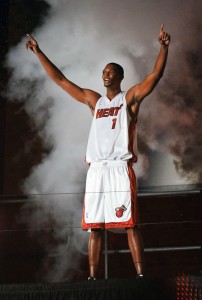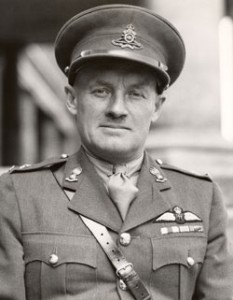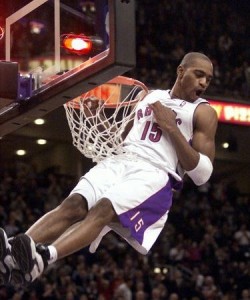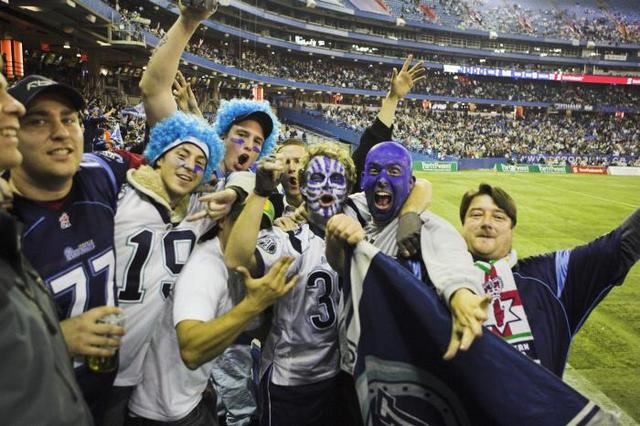Why is Chris Bosh going to be booed tonight?
Fans of the Toronto Raptors and Chris Bosh, the former star of the team, have been on a collision course since the National Basketball Association’s schedule was released two months ago.
Ever since Bosh announced he was signing with the Miami Heat, fans have been chomping at the bit to heckle and jeer him when he returns to Toronto. The wait is finally over, as Bosh’s Miami Heat will be at the Air Canada Centre tonight.
“I’m on another team,’’ he said to the Toronto Sun on Tuesday. “I would like it (to be liked) because that’s like a fairy tale ending or beginning, but that might not be the case.
“I’ll be ready for anything.”
Bosh can hope all he want, but he is going to be booed and heckled every time he steps in Toronto for the rest of his career. He will be subjected to as much vitriol as Vince Carter and Tracy McGrady are even though they’re years removed from their time on the Raptors.
Sadly, Bosh will probably never understand why he’s now the target of so much scorn in Toronto.
Ironically, the reason for the hatred is the same reason why he left: he doesn’t understand the character of the city.
He doesn’t understand that, ultimately, Toronto is a conservative place.
I don’t mean conservative in the modern, Glenn Beck, Republican sense, but the classical, small-c libertarian way, with an emphasis on individuality, entrepreneurship and, above all else, work ethic.
Founded by Governor John Graves Simcoe in 1793, the city historically stood in contrast to its Gallic cousin to the east, Montreal.
Largely inhabited by Protestants of British decent until the 1950s, Toronto’s early civic life focused on being loyal citizens to the crown, devoted members of their church and especially constructive members of the business world.
Those three characteristics earned Toronto nicknames likes “the Queen City” and “Toronto the Good”. Jokes about being able to shoot a cannon down Yonge Street on a Saturday night without hitting anyone were common. It was a staid, serious place.
Over time, monarchism and religiousness have faded and Toronto has become a more cosmopolitan, multicultural place with a vibrant nightlife. But that dedication to working hard and getting things done has remained at the core of the city.
The serious, stoic demeanour of Torontonians is often interpreted amongst other Canadians, perhaps fairly, as aloofness or even arrogance. There’s a coldness to how people carry themselves in Toronto, although defenders of the city would probably call it “walking with purpose”.
That indifference translates to the business world: It doesn’t matter who you are or where you’re from, as long as you put your nose to the grindstone and work hard, there’s a place for you in Toronto.
It’s that businesslike attitude has made Toronto the most multicultural city on Earth. It’s what makes Ontario’s capital the home of North America’s oldest continuously running Orangeman’s parade, but also allows Toronto to host one of the world’s largest LGBT Pride festivals every summer – the two seemingly contradictory events are held just weeks apart.
That spirit of efficiency and industriousness is what inspired Peter Ustinov to say “Toronto is New York run by the Swiss.”
Toronto’s workmanlike approach to, well, everything, has influenced the city’s sporting culture as well.
Like most things in Toronto’s sporting history it all starts with Conn Smythe.
The founder and long-time owner of the Maple Leafs favoured players who played a tough, relentless style of hockey. His motto of “If you can’t beat ‘em in the alley you won’t beat them on the ice” shaped the identity of the franchise, and set it apart from the free-wheeling finesse play of the rival Montreal Canadiens.
Smythe also set the tone for fan behaviour in Toronto, enforcing a strict dress code for fans at Leafs games. There’s a famous story that a wealthy couple rewarded their maid with their seasons tickets for the night. The morning after the game Smythe called the couple’s home, threatening to revoke their passes if anyone in their seats wasn’t wearing a shirt and tie or a proper Sunday dress, because the maid and her date hadn’t met Smythe’s high standards.
As a result, Torontonians have little interest in flashy athletes or raucous crowd behaviour. They want to quietly cheer on their teams and reward the players who work the hardest, not necessarily the ones with the best numbers.
Take the current roster of the Blue Jays as an example.
The most enduringly popular baseball player in Toronto this past decade is utility infielder John McDonald, despite his career .239 batting average.
I promise you that when the team’s line up is announced on opening day this spring the crowd reaction for perennial bench warmer McDonald will rival that of reigning home run king Jose Bautista.
Why? Because when McDonald does play, he puts his heart out on the field. A terrible batter, the 36-year-old veteran has won the love of Jays fans by never quitting on a play, and happily volunteering to do whatever the team needs him to do, including pitch relief or help out as the bullpen catcher.
Similarly, the Leafs have had a lengthy list of players renowned for their intensely physical style of play that has earned them the adoration of fans, even though their offensive numbers are far inferior to their contemporaries.
Players like Darcy Tucker, Tie Domi, Wendel Clark and Doug Gilmour will forever be deified in Toronto not for any goals they scored or any particularly outstanding play, but for the way they punished anyone who dared step on the ice against the Leafs.
Even when a truly gifted and talented player suits up for a Toronto franchise, it takes that same kind of hard-working, detail-oriented approach to win the fans’ devotion. Fortunately for sports fans in the city, the two best players to play in Toronto in the past 20 years are Roy Halladay and Mats Sundin, the quietest and most stoic athletes you can imagine.
This brings us to the Raptors and why poor Bosh is going to have hate, and possibly garbage, poured on him at the Air Canada Centre tonight.
It has little to do with loyalty – after all, both Halladay and Sundin left Toronto for greener pastures and they’re still beloved – and everything to do with how he left.
Whether they can articulate it or not, Torontonians are incensed by Bosh’s apparent rejection of their values.
Like Vince Carter before him, Bosh has left the Raptors to seek fame and fortune, to be flashy and find the spotlight of endorsement deals and American media attention. He left the cold, hard streets of Toronto for the glitzy nightlife of South Beach.
Worse yet, Bosh spent his last games with the Raptors sitting on the bench, nursing an injury. That is a cardinal sin to Torontonians: he was lazy.
Torontonians can understand, even appreciate, Halladay and Sundin leaving to win championships with better clubs - being rewarded for your hard work makes perfect sense to the city. But leaving for nightclubs and the easy life of sunny Florida? That is anathema.
It’s a shame, too. Bosh had showed so much promise when he was first drafted by the Raptors. Feature stories and interviews with the young rookie talked about how much work he was planning on doing in the off season. He openly discussed how he had to consume thousands of calories a day to bulk up for the more physical play of the NBA. Bosh liked to read. He was a computer science major in university.
In other words, he was perfect for Toronto.
Particularly after the disaster that was Carter’s time with the Raptors.
After all, Carter was a flashy style-over-substance player who briefly won the hearts of Raptors fans with the franchise’s deepest playoff run to date, only to blow it all by going to his university’s graduation ceremony instead of – that’s right – focussing on the task at hand and giving 100% to his team.
But slowly, the love affair between Bosh and Toronto soured. His charming videos of him working out became more self-aggrandizing and egocentric. It was less about industry and more about creating a brand.
Bosh had the negative example of Carter to try and avoid, but was also surrounded by positive role models like Matt Bonner, Jerome Williams, Morris Peterson and Jose Calderon. They’re all players who aren’t nearly as talented as Bosh, but who work hard on and off the court and were rewarded with the love and appreciation of the fans.
Instead, Bosh has opted to make a cameo on Entourage, film navel-gazing documentaries on getting his first tattoo and make over-the-top appearances with James and Dwyane Wade announcing how many championships they’re going to win with the Heat.
Bosh left because he felt like Toronto wasn't the place for him to reach the level, not just on the court, but off of it. He was right. It's no place for someone seeking fame, because they'll never find it here. The city spurns superstars.
Raptors fans, the supporters of any sports team in this city, will always favour the quiet, hard-working bench warmer over the flashy star with all the merchandise. Bosh's vision just couldn't line up with what the city demands of its sports heroes. That's not his fault, or Toronto's, it's just the way it's meant to be.
Unfortunately for Bosh, all this adds up to one thing: Toronto is going to show him no mercy. Not necessarily because he betrayed the city’s trust or because he is a bad player or because Raptors fans are particularly spiteful, but because he’s turned his back on the values the city holds most dear. Effort. Hustle. Hard work.
Chris Bosh is going to be booed tonight and for the rest of his career because he rejected the core value that governs behaviour in Toronto. He unknowingly struck at the city’s core principle, and Raptors fans will be unable to forgive him for that.
What is the best team in Toronto?
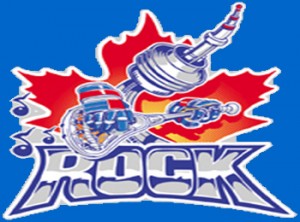 Toronto sports fans are lucky – they live in one of the few cities in North America to have a professional sports team in all four major leagues.
Toronto sports fans are lucky – they live in one of the few cities in North America to have a professional sports team in all four major leagues.
Well, okay, there isn’t really a National Football League team here, but the Buffalo Bills play two games a season at the Rogers Centre and there are the Toronto Argonauts, historically the Canadian Football League’s most successful team. Football is definitely covered in Canada's largest city.
But I digress. Toronto has eight professional sports teams, on a par with, or better than, the 14 American cities that have teams in the NFL, National Basketball Association, Major League Baseball and the National Hockey League.
Unfortunately, this creates a weird competition amongst the teams as they vie for fans attention. I was reminded of this weeks ago when a friend of mine from senior school posted on Facebook “So glad the Leafs suck more than the Raps. At least the Raps have upside”.
Of course, this was before the Raptors embarked on a Cavaliers-esque 13-game losing streak, but the comment got me wondering: what is the best team in Toronto? Which team does the best job of representing a city spoiled for choice?
Here are all of the city’s professional sports franchises, in order of winning percentage over the past two years.
| Team | This season | Last season | Cumulative |
| Rock | .667 (4-2)* | .562 (9-7)† | .615 |
| Blue Jays | .525 (85-77) | .463 (75-87) | .494 |
| Marlies | .470 (24-20-7)* | .413 (33-35-12) | .442 |
| Nationals‡ | .250 (3-9) | .583 (7-9) †¥ | .417 |
| Maple Leafs | .426 (23-26-5)* | .366 (30-38-14) | .396 |
| Raptors | .269 (14-38)* | .488 (40-42) | .379 |
| Argonauts | .500 (9-9-0) † | .167 (3-15-0) | .336 |
| Toronto FC | .300 (9-13-8) | .333 (10-11-9) | .317 |
Notes: * - Season currently underway.
† - Made the playoffs.
¥ - Won championship.
‡ - It was announced in the offseason that the Toronto Nationals have moved to the bustling metropolis of Hamilton, Ont., for 2011.
What’s most apparent in this chart is that it’s good to be a fan of lacrosse in Toronto. Especially if you live in the western part of the Greater Toronto Area, since Major League Lacrosse’s Toronto Nationals – the most recent champions in the city – are moving to nearby Hamilton.
But if you want to see a Toronto-based team do well in the regular season and go deep in to the postseason, you’d better pick up the nuances of lacrosse. The Rock are the best team in the NLL this year after losing a close game in the league championship last season.
Further, six of Toronto’s last nine championships have come from lacrosse teams, with the Rock contributing five and the Nationals bringing home the Steinfeld Cup two summers ago. The other three are all thanks to the Toronto Argonauts winning the Grey Cup in 1996, 1997 and 2004.
It’s also worth noting that attendance is seemingly unaffected by a team’s success.
Most Torontonians would immediately twig to the fact that the Maple Leafs, the city’s fifth best team, remain the most popular franchise while the Blue Jays – ranked second – had serious attendance problems last summer.
But what I find most striking is that Toronto FC, the team with the most passionate fans, has the worst record of Hogtown’s professional sports franchises.
In any event, I think this is an interesting exercise that would test perceptions of Toronto’s sports teams. Tell me: were there any surprises on this chart for you?
Happy anniversary, Johnchidleyhill.com!
Last Tuesday was the one-year anniversary of this blog's creation. For the past year this website has been a place to work on my writing, talk about things that interest me and show off my various professional projects.
I’ve been really pleased with this site and with how my career has developed over the past year. In particular, I’ve been touched by all the positive feedback I’ve received from people. I’m always surprised with how often friends or family mention that they love my writing here. It’s nice to see my hard work appreciated like that.
To me, the most incredible thing about this blog is all the people who’ve read my posts that I don’t know personally. According to my metrics, I’ve had 16,688 unique visits and counting. When I started this site a year ago I never thought I’d have that many visitors.
Thank you for all your support.
To celebrate this blog’s anniversary I thought I’d list the top five most popular articles on this website.
But before I do, I want to mention two in particular: "Bill Simmons’ Twitter idea might be a game-changer" and "Sandwich Review: KFC’s Double Down". These two posts are the two biggest spikes in readership I’ve had over the course of the year. In both cases my readership doubled or even tripled the day they were posted.
Here are the top five most read articles of JCH.com over the past 365 days, in ascending order:
5. "Bill Simmons’ Twitter idea might be a game-changer" – May 14th, 2010
As mentioned above, this article was one of the first big spikes in traffic this blog saw. Collecting a total of 202 unique page views since it was first published, this was my first serious stab at discussing the evolving role of media in sports.
“An interesting experiment occurred on Thursday night as the Boston Celtics eliminated the Cleveland Cavaliers from the National Basketball Association’s Eastern Conference semifinal with a 94-85 victory.
As league MVP LeBron James stepped up to the free throw line in the second half the Boston crowd began to chant “New-York-Knicks! New-York-Knicks!”, referring to one of the more moribund destinations that the soon-to-be free agent might head to in the offseason.
Later, the Celtic faithful began to chant “MSG! MSG!”, the acronym for Madison Square Gardens, the home of the Knicks.
This was all part of a grand scheme concocted by ESPN.com’s Bill Simmons, Boston’s most famous sports fan, and it may just revolutionize spectatordom.”
4. "Sandwich Review: KFC’s Double Down" – Oct. 19th 2010
I’ve reviewed a lot of things on this blog: comics, books, the occasional movie and even some baseball stadiums. But my look at the controversial Double Down sandwich at KFC was the first and last crack at being a foodie you’ll ever seen in this space. That review was particularly timely, earning some buzz and a spike in readership, eventually tallying 214 reads.
“It took months to make it possible, but yesterday I finally ate a Double Down from KFC.
Normally, reviewing a sandwich is not my bag. After all, my good friend and neighbour John already does a bang-up job over at In Search of a Sandwich. Why would I want to compete?
But the Double Down - KFC’s bacon, sauce and cheese sandwich that substitutes the bread for pieces of deep-fried chicken - transcends a normal sandwich. Just as the Double Down pushes the envelope of sandwich technology, I must expand my blogging horizons for this fast food delicacy.”
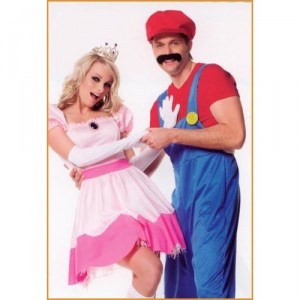 3. "Three ice dancing performances I’d like to see" – Feb. 23rd 2010
3. "Three ice dancing performances I’d like to see" – Feb. 23rd 2010
I blogged throughout the Vancouver Olympics, usually in response to a significant event at the games. By far, the most popular of these pieces was my suggestion for three ice dancing routines that would set the performers apart from the cliché-laden pack.
When I posted this link on Twitter it was quickly picked up and retweeted by many of my friends, making it as close to viral as this site has ever been. That buzz resulted in a total of 313 views to date.
Oddly, and somewhat creepily, “Princess Peach” is by far the most popular search on this website, all thanks to this article.
“Like many Canadians, I was thrilled by Tessa Virtue and Scott Moir’s gold medal ice dance performance on Monday night.
I would never call myself a figure skating or ice dancing fan – I find that too often the judge’s decisions are political – but I was impressed with the athleticism and technique of all the dancers in the competition.
What did not impress me was their lack of creativity or originality. Most of the performances bled together. Virtue and Moir stood above the rest of the competition because they didn’t rely on clichéd music like the themes from the Phantom of the Opera or Requiem for a Dream. They weren’t covered with sequins and feathers. Their performance truly distinguished them from the rest of the pack.”
2. "Toronto has two strikes against it for most professional athletes" – Mar. 9th 2010
I wrote this piece between Roy Halladay’s departure to the Philadelphia Phillies and the National Basketball Association’s free agency period that saw Chris Bosh take his talents to South Beach.
It’s a topic I’d like to revisit sometime, especially since one of my commenters pointed out that my math on the differences in taxes between the United States and Canada might be wrong. Despite the possible error, this post has been read 417 times.
“This summer could be particularly heart-breaking for fans of the Toronto Raptors as they face the prospect of forward Chris Bosh, arguably the best player the team has ever seen, leaving the city as a free agent.
Toronto Blue Jays fans can sympathize with their basketball neighbours – this summer they lost ace Roy Halladay in a lopsided trade with the Philadelphia Phillies and Seattle Mariners.
It’s a familiar story for Torontonians. One of their teams will draft a player who becomes a star, but the franchise player eventually begins to grumble and complain about greener pastures, eventually demanding a trade or letting their contract expire and moving on via free agency.”
1. "Book Review: The Glass Castle by Jeannette Wells" – Sept. 15th 2010
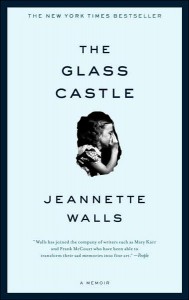 I try to review every book that I read, even if it doesn’t have anything to do with the general themes of this blog like sports and pop culture. But the incredible success of my review of the Glass Castle shows that maybe, just maybe, I should review literally every single thing I experience. Not just books, but music, food, furniture, public transportation, whatever. Although it is the second-most recent post on this list, it’s garnered far and away the most views at 1,106 and counting.
I try to review every book that I read, even if it doesn’t have anything to do with the general themes of this blog like sports and pop culture. But the incredible success of my review of the Glass Castle shows that maybe, just maybe, I should review literally every single thing I experience. Not just books, but music, food, furniture, public transportation, whatever. Although it is the second-most recent post on this list, it’s garnered far and away the most views at 1,106 and counting.
“I never thought that I’d enjoy Jeannette Walls’ "the Glass Castle", but I was wrong.
On the surface, it looked like it was more for stay-at-home moms. It was one of Heather’s Picks at Chapters-Indigo Bookstores and reeked of Oprah’s Book Club. But once I started reading it I appreciated Walls’ writing and was moved by her story.
Like Frank McCourt’s ultra-popular Angela’s Ashes, the Glass Castle is a dark memoir about a dysfunctional family crippled by the father’s alcoholism and the mother’s loose grip on reality.”
Top 10 ideas the National Hockey League should institute
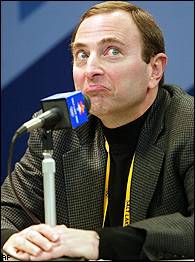 With the National Hockey League’s 30 general managers currently meeting in downtown Toronto to discuss changes to rules and policy, I figured I’d take the opportunity to chime in with my two cents. Times 10. My 20 cents, if you will.
With the National Hockey League’s 30 general managers currently meeting in downtown Toronto to discuss changes to rules and policy, I figured I’d take the opportunity to chime in with my two cents. Times 10. My 20 cents, if you will.
Lengthen overtime
Extending overtime is already on the table as the GM’s try to cut down on the number of shootouts, but I wanted to voice my support for this idea.
Right now, the extra period is just five minutes of 4-on-4 followed by the shootout. OT is the tensest period of play in any hockey game with each penalty, missed pass or deflected shot putting the game on the line.
There’s been a lot of talk of having five minutes of 4-on-4 and then five of 3-on-3. The former doesn’t really strike me as too interesting - I don’t see why they couldn’t just do 10 minutes of 4-on-4, or, what the hell, a full 20 minutes of 4-on-4 followed by the shootout.
It’ll still cut down on the number of shootouts and will create more tension and therefore more excitement. Fans tend to enjoy excitement.
Get rid of archaic blackout rules
As I’ve mentioned before, my fiancée Katy and I are a mixed couple – I’m a Leafs fan and she supports the Oilers.
It makes for the occasional tense moment, but what really aggravates things is that we can only watch the Leafs and rarely the Oilers thanks to the NHL’s ridiculous TV blackout rules. This regulation prevents anyone with a standard cable package from watching an out-of-market hockey game.
In other words, although Sportsnet West was carrying the Edmonton-Carolina game last night, we could only watch the Toronto-Tampa Bay match or the Washington Capitals-New York Rangers game. I understand the original reasoning behind this rule was to keep fans interested in their hometown markets.
However, this hurts the NHL more than it helps. If a fan in Minnesota wants to cheer for the Pittsburgh Penguins, then so be it. Associating yourself with frustrating rules that limit your fans ability to watch your product is never a good idea. Dropping this ridiculous regulation would also tie in with…
Embracing fantasy hockey
I think we can all agree that the National Football League is the best run professional sports league in North America and arguably the world. So why not tear a page out of their playbook and embrace fantasy sports?
In addition to showing the scores from games, the NFL runs tickers of the top five stat lines from each position during their Sunday broadcasts. That running update on the individual success of its players is aimed straight at fantasy football managers eager to see how their personal team is doing.
The NHL should do likewise: run a ticker with the statistics of the top five forwards, defenders and goalies each and every broadcast night.
Clamping down on vague “lower body injury” reports would be a good idea as well. Force the teams to reveal more details about their hurting players for the benefit of fantasy hockey managers. Anything to make fantasy hockey more accessible and enjoyable.
Show where shots are coming from and going
This has long been a bugbear of mine. During games broadcasters will happily tell you how many shots a goalie has faced. That’s all well and good, but not all shots were created equal. A shot from the slot is a lot more dangerous than one from the blue line.
Hockey broadcasts should show where on the ice players are shooting from and where they’re going on net. The technology is already there – Major League Baseball can track the trajectory of pitches and the National Basketball Association regularly shows where players shoot from on the court.
Both concepts should be applied to hockey. It would really help viewers understand the underlying strategies and tactics within a game as patterns begin to emerge in shot selection and location.
Is the defence successfully pushing forwards to the outside? Are they giving up a lot of breakaways? Is the power play unit feeding to the rearguard for big shots, or working it down low? Are shooters trying to pick top corners, or shooting along the ice for big rebounds? It would really add more depth and understanding for the average viewer.
No touch icing
The favourite hockey cause of the CBC’s Don Cherry, no touch icing is an idea that is long past due. With increasing concerns about head shots and concussions, why is the NHL persisting in having a rule that routinely has two players racing the full length of the ice toward unforgiving boards? Just take it out of the game already!
Crossover playoffs
The NHL has a lengthy and rich history, particularly amongst its storied Original Six franchises.
Unfortunately, thanks to their current playoff system, many of the oldest rivalries in the game will never be put on the league’s biggest stage: the Stanley Cup final.
The Montreal Canadiens and Toronto Maple Leafs, the biggest and best feud in all of hockey will never play with the NHL championship at stake again. Neither will the Chicago Blackhawks and Detroit Red Wings or the Habs and Boston Bruins.
My solution is actually an old idea: have the top 16 teams in the league in one playoff pool. President’s Trophy winner will take in the 16th seed, the other conference champion will take on No. 15, and so on. It’s how the playoffs were structured in the 1970s and 80s, and it’ll work again today.
Get back in touch with the history of the game
Other than the MLB, there is no major North American sport that has as rich a history as the NHL. Unfortunately, commissioner Gary Bettman clearly sees this as a weakness and tries to cover up or even undo a lot of the league’s historical underpinnings.
This is a mistake.
By shying away from that history it makes the NHL seem like a new, fly-by-night operation, particularly when franchises are being parachuted into Sunbelt markets that are unfamiliar with the game.
The NHL should embrace its past with throwback jerseys, prominent marketing of its namesake trophies (like the Lady Byng) and make sure to compare today’s stars with some of the legends of hockey. History and tradition are strengths, not weaknesses.
No more two-piece sticks
Look, I’m all for innovation. I’m not some Luddite who poo-poos every new idea. But let’s get real: two-piece hockey sticks break a lot more than good ol’ fashion wooden sticks.
Not only is this dangerous to players, linesmen and potentially fans, but it slows down the game as the remnants of that $200 fibre composite is cleared off the ice. If an all-wooden stick was good enough for Al MacInnis’ record holding slap shot, it’s good enough now.
Reinvest in amateur hockey
I don’t actually think that the Sun Belt expansion was that bad an idea. New markets and new fans really can work. It just wasn’t done right.
The NHL should take the time to invest in amateur hockey at the grassroots level because those are the fans – and players – of the future.
Amateur hockey would help educate parents and kids about the sport and create an instant niche market of coaches taking their teams to games.
When moving in to Phoenix, Miami or Atlanta the league should have set up minor hockey systems to introduce those cities to the sport. Obviously, that ship has sailed, but it might help with some damage control if they got local kids involved in the game.
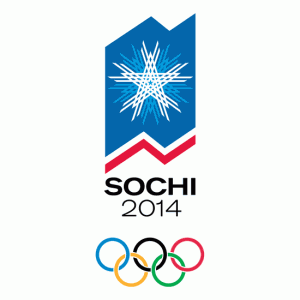 Send NHLers to the 2014 Sochi Olympics
Send NHLers to the 2014 Sochi Olympics
This was, of course, a hot-button debate at the World Hockey Summit this summer, but it’s worth mentioning again.
Bettman and co. must let NHLers play in the Olympics, and they should make that announcement sooner rather than later.
Why? Because although the Stanley Cup and the Winter Classic do a great job of raising hockey’s profile, nothing does a better job of exposing the sport to the masses like the Olympics. Nothing.
This year’s men’s hockey final between the United States and Canada was the most watched hockey game, ever. It drew 44.2 million viewers across North America and was the main event of the two week sporting event.
The NHL would be foolish to give up that kind of mainstream media attention. Bettman should make the announcement soon as well and what better place than this year’s newly reformatted All-Star Game?
What do you think? What ideas do you have for the NHL GMs? Post them in the comment section below.
Public funding of stadiums should come with a caveat
David Asper made an articulate argument for the public funding of stadiums in today’s National Post, that focused on sport’s role in culture and how athletics should be treated as the equal of art and drama.
Asper, a guest contributor to the Post, is a law professor at the University of Manitoba as well as a successful businessman who is spearheading the movement for a new community-owned football stadium in Winnipeg.
However, Asper’s argument is framed in the context of the proposed hockey arena in Quebec City that would help bring the National Hockey League back to the capital of la Belle Provence. His article supports Prime Minister Stephen Harper’s recent declaration that the federal government would consider aiding the project.
“Governments at all levels in Canada have an easy time providing billions of dollars annually toward artists and their cultural organizations — many of which are just as ‘professional’ as NHL athletes and teams,” writes Asper.
“Similarly, governments often have little or no problem funding concert halls, theatres, art galleries and other bricks-and-mortar venues where cultural events are performed.”
Although Asper’s clearly got a bit of a bias, he makes a compelling argument. There’s no denying that sport is a part of culture and that all levels of government support artistic enterprises in the name of improving society and contributing to Canada’s collective heritage.
Of course, Asper is conveniently forgetting the fact that the Harper government controversially cut back support to the arts not so long ago and that although there are some musicians, filmmakers and artists who make a healthy living, there are just as many who do not. Professional sports, particularly an NHL franchise in Canada, would be a different animal.
Despite that glaring flaw in his article, it is undeniable that Asper has a point – sport is certainly a worthwhile investment for all levels of government, not just for cultural reasons but also because it encourages healthier lifestyles in citizens.
But those financially allotments should always come with community-oriented strings attached.
These projects shouldn’t just be about generating tourist income and a sense of civic pride – they should also be used to create facilities and programs that can be shared by the public and to encourage athletics at the amateur and recreational levels.
For example, the City of Toronto did well when they agreed to support the creation of BMO Field on the condition that its soccer pitch would also be used for local recreational leagues.
Unfortunately, Toronto City Council’s lawyers didn’t read the fine print just right and Maple Leaf Sports and Entertainment blocked the oft-discussed possibility of moving the Argonauts to BMO Field.
But the stadium is used for recreational soccer leagues and has turned the Canadian National Exhibition Grounds into a hub of activity year-round. The city also got the added bonus of having MLSE, along with the Toronto Nationals of Major League Lacrosse, rehabilitate Lamport Stadium, revitalizing a wreck of a facility that is also being used for amateur sports.
That is how governmental sponsorship of stadiums, arenas and professional sports can pay off - by insuring that these professional teams partner with their local communities to implement athletic programs that will grow sports at the grassroots level. It engages the community, creates fans and helps to develop a unified civic culture.
At long last, MMA has arrived in Ontario
 It took a couple of reversals, but Premier Dalton McGuinty has finally made the right decision and ruled that professional mixed martial arts fights can be held in Ontario, paving the way for a lucrative Ultimate Fighting Championship card in Toronto sometime in 2011.
It took a couple of reversals, but Premier Dalton McGuinty has finally made the right decision and ruled that professional mixed martial arts fights can be held in Ontario, paving the way for a lucrative Ultimate Fighting Championship card in Toronto sometime in 2011.
I’ve long supported this move, including a lengthy blog post in February after McGuinty said that the ban on MMA was not going to be lifted.
But now that the Premier has changed his mind, it’s worth repeating some of the arguments in favour of the emerging sport.
As most proponents of MMA have argued, it’s actually the safest of the combat sports because the referees have more discretion to stop the match and as a result are more proactive in ending lopsided bouts.
As a result, unlike boxing’s standing counts, once a fighter has sustained a serious blow to the head, the match is over. This prevents concussions and long-term brain damage.
Old school sports commentators often complain about the blood and savagery of the sport, while championing traditional combat sports like boxing, wrestling, judo and tae kwon do.
This is a weak argument on their part. After all, MMA incorporates strategy and training from all of those disciplines. There’s no case to be made against the submission moves of the UFC when wrestling, one of the world’s first Olympic sports, relies on many of the same moves.
Further, prizefights were already being held on some Native reserves. Legalization province-wide would mean that better, more expansive safety regulations would be created, insuring that mixed martial artists would be guaranteed higher safety standards.
There is also the economic benefit. Toronto is a sporting city and the home base for almost all of Canada’s major media outlets. A major MMA event here would expose the sport to even more people and create a buzz around the industry.
In their press releases the Ontario government has estimated that it’ll generate approximately $6 million for Toronto-area businesses.
I’m no economist and I don’t know how these estimates work or how accurate they are, but obvious that like any big event - concert, conference, festival, whatever – a UFC event would provide a boost to Ontario’s economy.
Without getting too political, I will say that it’s nice to see that Premier Dalton McGuinty changed his mind and is, at long last, welcoming mixed martial arts and promoters like the UFC to Ontario. It's one of those rare win-win situations: it will be good for the sport and for the province.
Toronto has two strikes against it for most professional athletes
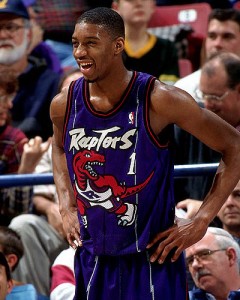
Former Toronto Raptor Tracy McGrady recently enlightened Torontonians as to why he left the Raptors.
This summer could be particularly heart-breaking for fans of the Toronto Raptors as they face the prospect of forward Chris Bosh, arguably the best player the team has ever seen, leaving the city as a free agent.
Toronto Blue Jays fans can sympathize with their basketball neighbours – this summer they lost ace Roy Halladay in a lopsided trade with the Philadelphia Phillies and Seattle Mariners.
It’s a familiar story for Torontonians. One of their teams will draft a player who becomes a star, but the franchise player eventually begins to grumble and complain about greener pastures, eventually demanding a trade or letting their contract expire and moving on via free agency.
Fortunately, NBA All-Star Tracy McGrady, a former Raptor, was in town and shed some light on the topic during a shoot-around with his teammates on the New York Knicks.
“Some guys do it for different reasons,” McGrady said. “[Bosh has] been here for quite some time now, and he's personally been successful. The team really hasn't done that much.”
And that’s the problem – teams in Toronto struggle against American competition. There are two main reasons for this:
1. The taxes in Canada limit team’s options when it comes to free agency.
Any professional athlete in a major sport (basketball, baseball, hockey) is going to earn in the high six figures.
In the United States, that would put them in the highest tax bracket, where they’d have to pay about 4.3% of their annual income to the federal government.
Employees in Canada who earn more than $126,264 pay 29% of their annual income to the federal government.
That is a jarring disparity. An athlete who earns $10 million per year on the Blue Jays or the Raptors would have to pay $2.9 million to the taxman. In the United States that same athlete would have to pay $430,000.
It’s tough to compete with other teams for prized free agents when they player will be losing 29% on the dollar just for signing on the dotted line.
2. Teams in Toronto offer less media exposure, making it a less attractive option for players.
Toronto is the biggest media centre in Canada, and actually stacks up pretty well against other North American cities in terms of population (fifth largest city, eighth largest metropolitan area).
However, sports teams based in Toronto get the short end of the stick when it comes to being televised on American networks.
Without a high profile in the United States an athlete can’t capitalize on their secondary source of income – endorsements and sponsorships. For example, Chris Bosh was drafted in 2003, the same year as LeBron James, Dwyane Wade and Carmelo Anthony. However, Bosh doesn’t even rank in the top 15 for jersey sales, and neither does Toronto for team sales. By comparison, all of Bosh’s draftmates rate highly on the list, even though they play for teams in smaller markets.
It all boils down to money. Professional athletes lose significant amounts of income from both of their main revenue sources, which makes Toronto a tough sell.
Some of you may be wondering why I haven’t mentioned hockey, a sport that has six teams in Canada? Simple, really.
Most hockey players are Canadian, and so they’re used to heavy taxation. The second largest group of players in the National Hockey League are European, who are also used to high taxes.
Beyond Sidney Crosby and Alexander Ovechkin, most players don’t expect, hockey players aren’t expecting much revenue from endorsements and sponsorship.
Also, the fact that there are six Canadian teams mitigates the lack of coverage in the United States - ESPN can ignore the Raptors and Blue Jays because they’re the only Canadian teams in the league, but when there’s at least one Canadian team playing every night and every franchise prominently features athletes from Canada, they’ve got no choice but to acknowledge non-American teams.
As an aside, all this adds to the fact that the Buffalo Bills, or any other team NFL team, would not work in Toronto.
All this is to say that in leagues where there is only one Canadian team (NBA, MLB and the MLS) there is a nearly unique set of challenges that face franchises based in Toronto. When the Raptors, Blue Jays and TFC struggle in the standings and begin to lose marquee players, it’s probably because they’re not grappling with the reality of the market.
Sure, a team can draft a young prospect, but it’s tremendously difficult to put together a team that can contend for the championship when so many players see Toronto as an undesirable city to play in.
